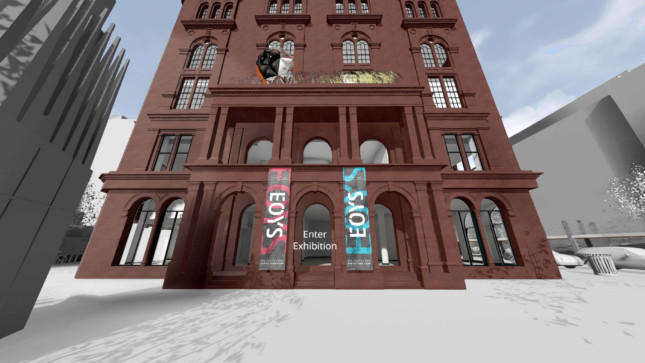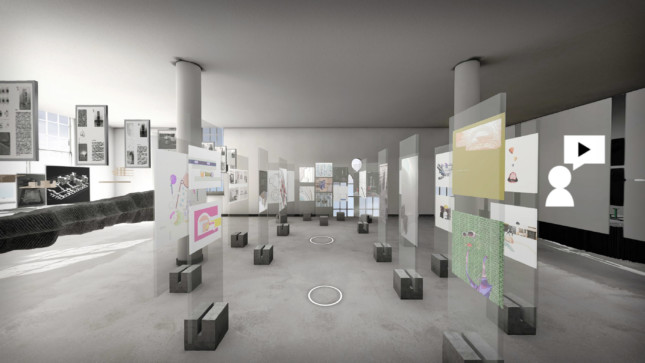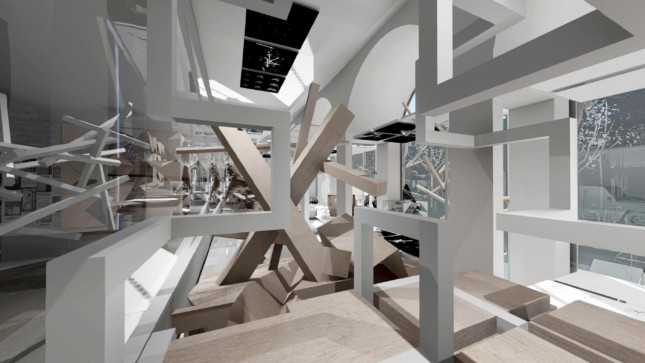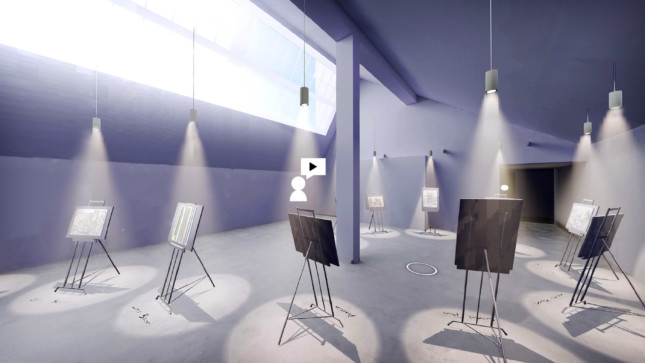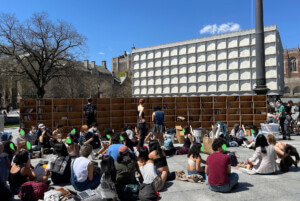For the first time since Cooper Union’s campus closed in mid-March due to the coronavirus pandemic, students can now roam the halls of the architecture school’s Foundation Building, albeit virtually. The End of Year Show, Cooper’s long-running exhibition of student work held annually since 1860, was quickly adapted to a digital format when it became clear that a traditional staging in the school’s landmark home would be unworkable in light of public health directives.
“When the pandemic hit, the whole world was reacting, and we were doing the same,” said Nader Tehrani, dean of the Cooper Union School of Architecture. “But within a week or two we realized we’re actually waiting for nothing. There’s no better time to start experimenting and exploring ways to confront the moment.”
Little more than a month before the show was slated to open in mid-June, Tehrani tapped designer and assistant professor Farzin Lotfi-Jam and Steven Hillyer, the director of the architecture school’s archive, to lead the effort to stage the exhibition online.
“It was a big experiment,” Hillyer said. “A schoolwide experiment.”
Work proceeded apace. Lotfi-Jam and Hillyer assembled a team of students and staff and held daily meetings with the group at 10 a.m. EST on Zoom. While the team diligently focused on their screens in the weeks leading up to the exhibition opening on June 17 (the show was originally scheduled to go live on June 10), events happening in the off-screen world inevitably came to the fore in their daily discussions.
“It started with COVID-19, and moved onto the Black Lives Matter movement and protests against racial injustice,” Lotfi-Jam said. “Those were the conditions of the production of the exhibition.”
In normal times, Cooper Union’s Foundation Building, an Italianate hulk in lower Manhattan constructed in 1859 and extensively renovated in 1974 by the late architect and professor John Hejduk, is a landmark and fixture in a city and school which are themselves in constant transformation. For students, the campus’s closure in March meant being turned out of their home-away-from-home.
Taesha Aurora, a fourth-year student in the undergraduate B.Arch program, had returned to New Delhi, India, when she was called upon to help create the Foundation Building’s digital clone. “Just as I was getting ready to start living in my time zone again,” Aurora said.
For the team—which also included current students Jesse Bassett, Dylan DeWald, Andrew Hebert, Maksymilian Mamak, Austin McInnis, and Qicheng Wu—the project entailed hours of painstaking work reconstructing the building, from drawings, as well as from memory, as a digital model.
When the virtual Foundation Building was ready, the team turned it over to the school community to design their exhibits. “150 members of the Cooper community each designed their own bit of it,” said Lotfi-Jam. “They were still familiar with it because everyone had a memory of how to install [student work] within the building.”
The exhibition is a labor of love: It captures both the school community’s lived memories of its home, while earnestly presenting new student work that might have otherwise gone unnoticed. Inflatable tectonic components from Helmuth Rosales’s thesis project, for instance, are boldly installed on the building’s south façade. At the same time, other installations call upon institutional memory, such as the restaging of John Hejduk’s House of the Suicide and House of the Mother of the Suicide. Those two structures were designed to memorialize Czech dissident Jan Palach and were last seen on Cooper Square during the spring of 2017. Their digital incarnation is “a gentle nod to the twentieth anniversary of Hejduk’s passing,” Tehrani added.
The first-ever virtual End of Year Show inevitably calls to mind memories of other experiments in virtual exhibition spaces, such as Asymptote Architects’ “Virtual Guggenheim,” designed on the eve of Y2K, in 1999. In that case, the architects explored digital space as a means to reach new audiences, and as a set of opportunities to structure digital experience differently, free from brick-and-mortar architecture’s encumbrances, that is, gravity and bodies. Many virtual exhibitions followed in the Guggenheim’s wake, and many more have lately come online in light of museum and gallery closures. Hardly any of them offer a compelling alternative to the spaces that they stand in place of. But the Cooper Union show succeeds where others have failed, making great use of the medium’s possibilities.
“The Foundation Building is a building in the city, and a virtual model on your screen,” Tehrani said. “As you zoom in, you can see other models that you can inhabit, as if you were a subject moving between different scales.”
And while the ability to slide fluidly between the infinitely large and the infinitely small is a boon to Cooper Union’s pedagogical investment in representation, the exhibition is most effective insofar as it captures some semblance of pre-pandemic life. Before social distancing became the new norm, the Cooper Union community was organized around sharing space in the Foundation Building, whether in studios, pin-ups, or lectures in the Great Hall, the cherished features of life in any school of architecture.
“The semester was an odd one because it physically isolated us. But what was unexpected was how Zoom and our other platforms brought people who usually hid in back corners into the public realm,” Tehrani said. “It really was a collective project.”
“The students who worked on this were absolutely incredible,” Lotfi-Jam added.






